The history of the former Schöpf-Merei Ágoston Hospital, at least as far as the site is concerned, dates back to 1870. The Erzsébet Homeopathic Hospital, initiated by Countess József Zichy, opened on today's 10 Bakáts Square. Here, destitute patients suffering from incurable diseases received medical care at an affordable price.
In the first decades, the building was actually just a one-story, six-room house, but by 1905 the foundation running the hospital had collected enough donations to buy the adjoining plot on the corner of Bakáts Square – Knézich Street, now 14 Knézich Street.
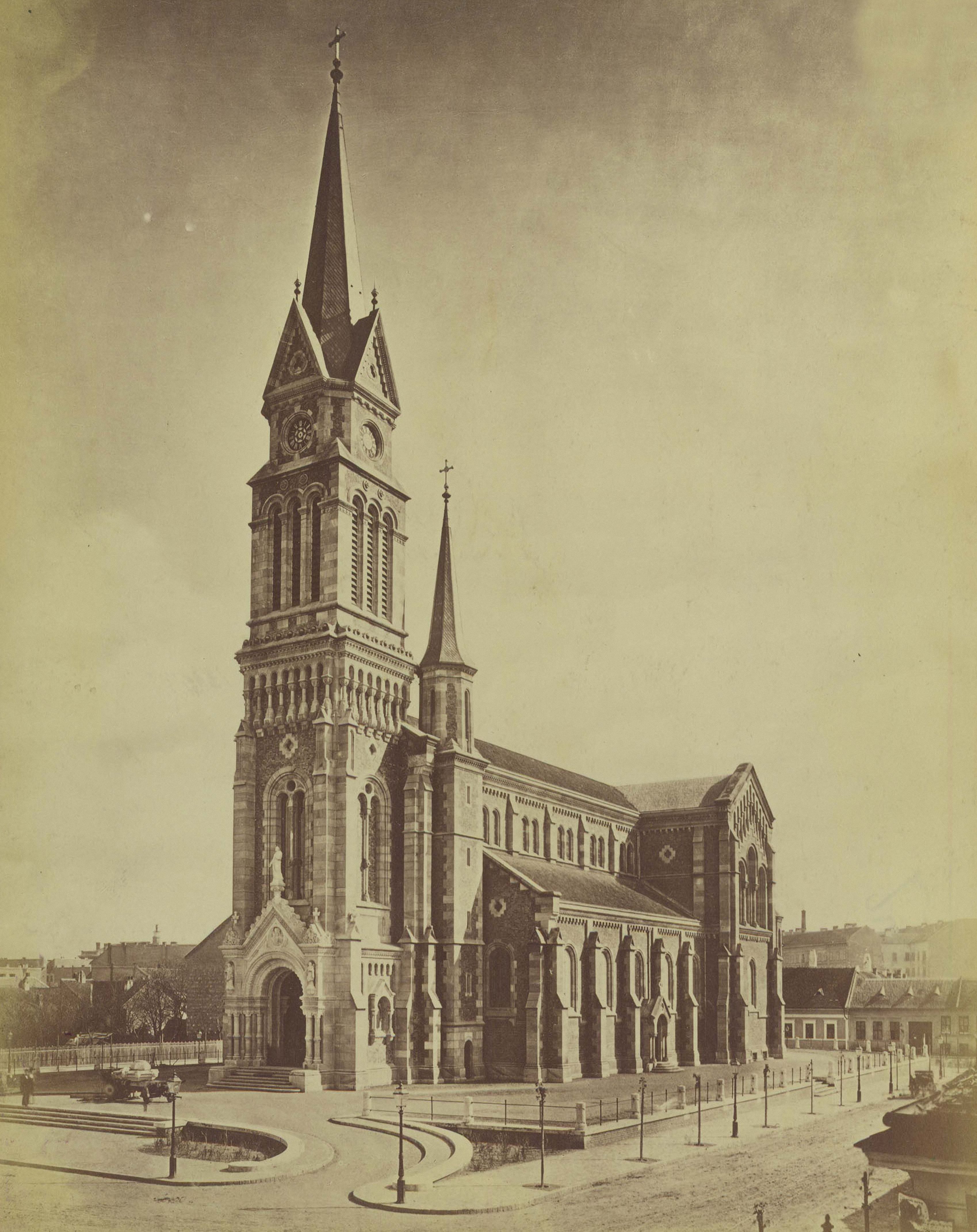
The one-storey building of the Erzsébet Homeopathic Hospital behind the church on Bakáts Square, in a photo taken in 1879 (Photo: Fortepan/Budapest Archives. Reference No.: HU.BFL.XV.19.d.1.05.093)
Building a new hospital was decided, and architect Eril Tőry was commissioned to prepare the plans. The hospital, which was completed in a year and was able to provide care for 150 patients, was opened in August 1906. The building was separated from the street by a border wall, and a walkway was created in the courtyard for the sick. The Daughters of Divine Love lived in the right wind, and on the left was the apartment and offices for the resident doctor. Between the two wings, wards and sick rooms, kitchens, pantries, and bathrooms were established.
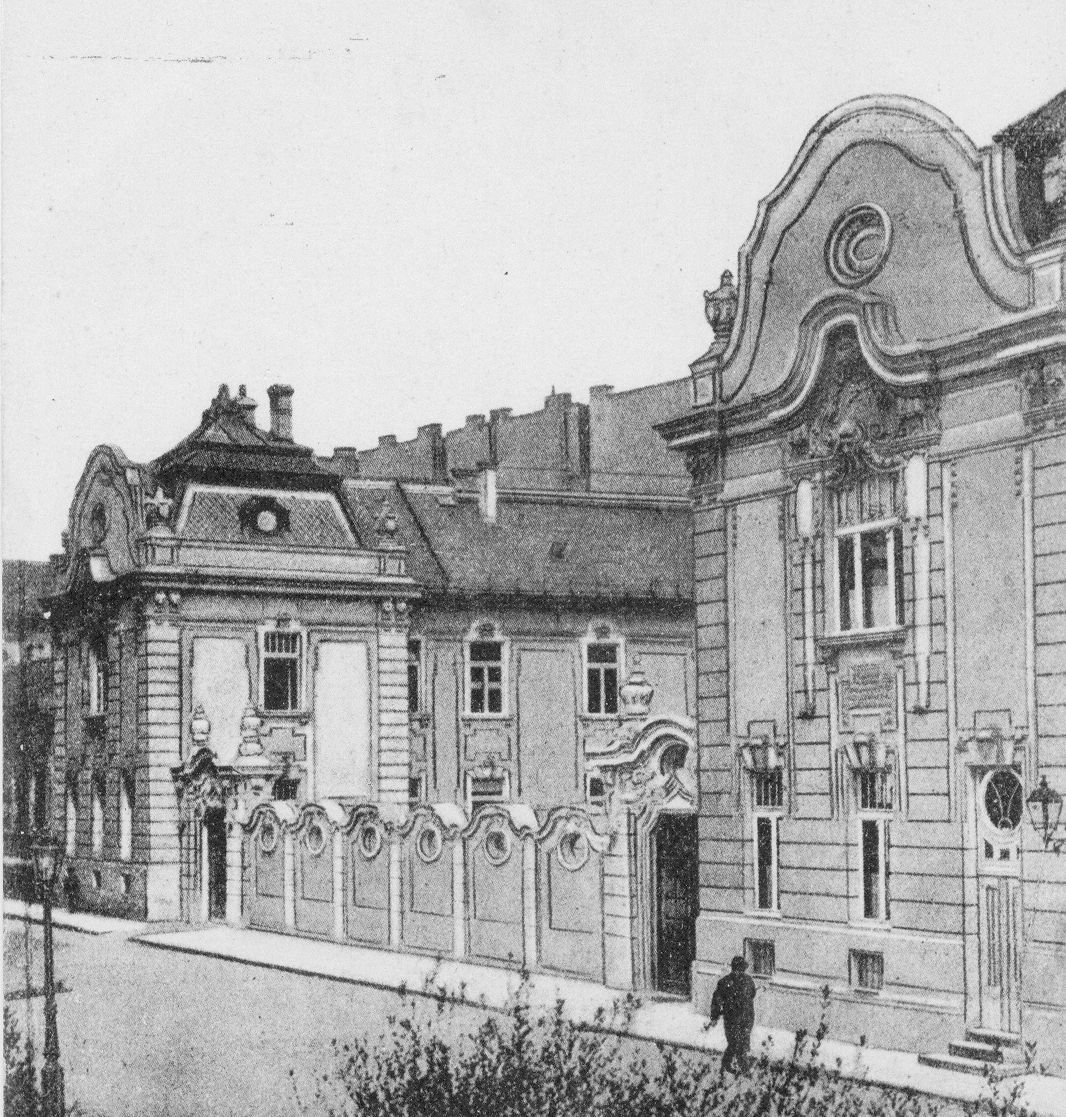
Facade of Erzsébet Hospital overlooking Bakáts Square around 1910 (below Knézich Street 14, on the corner of Bakáts Square) (Photo: Ferencváros Local History Collection)
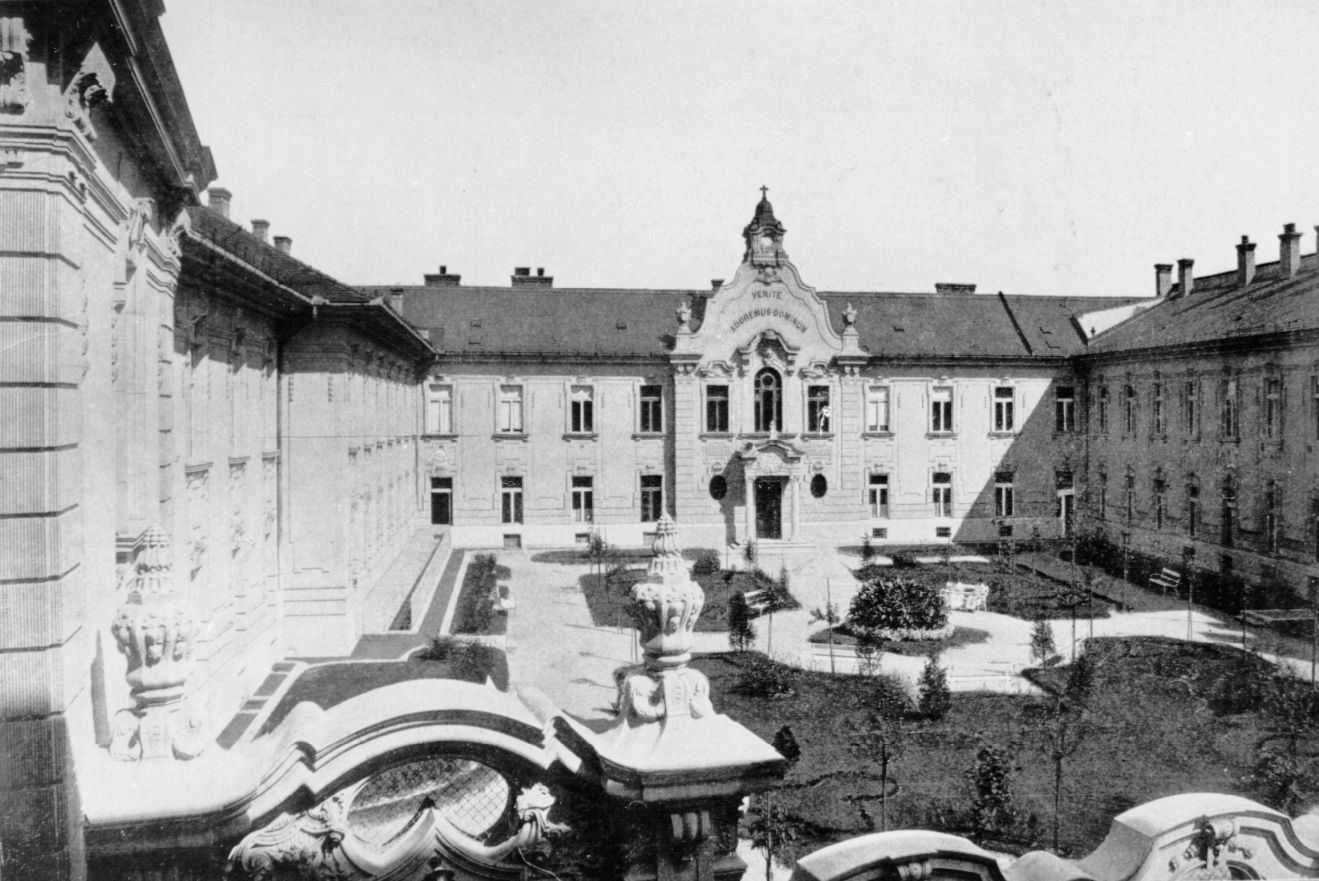 Courtyard of Erzsébet Hospital around 1910 (Photo: Ferencváros Local History Collection)
Courtyard of Erzsébet Hospital around 1910 (Photo: Ferencváros Local History Collection)
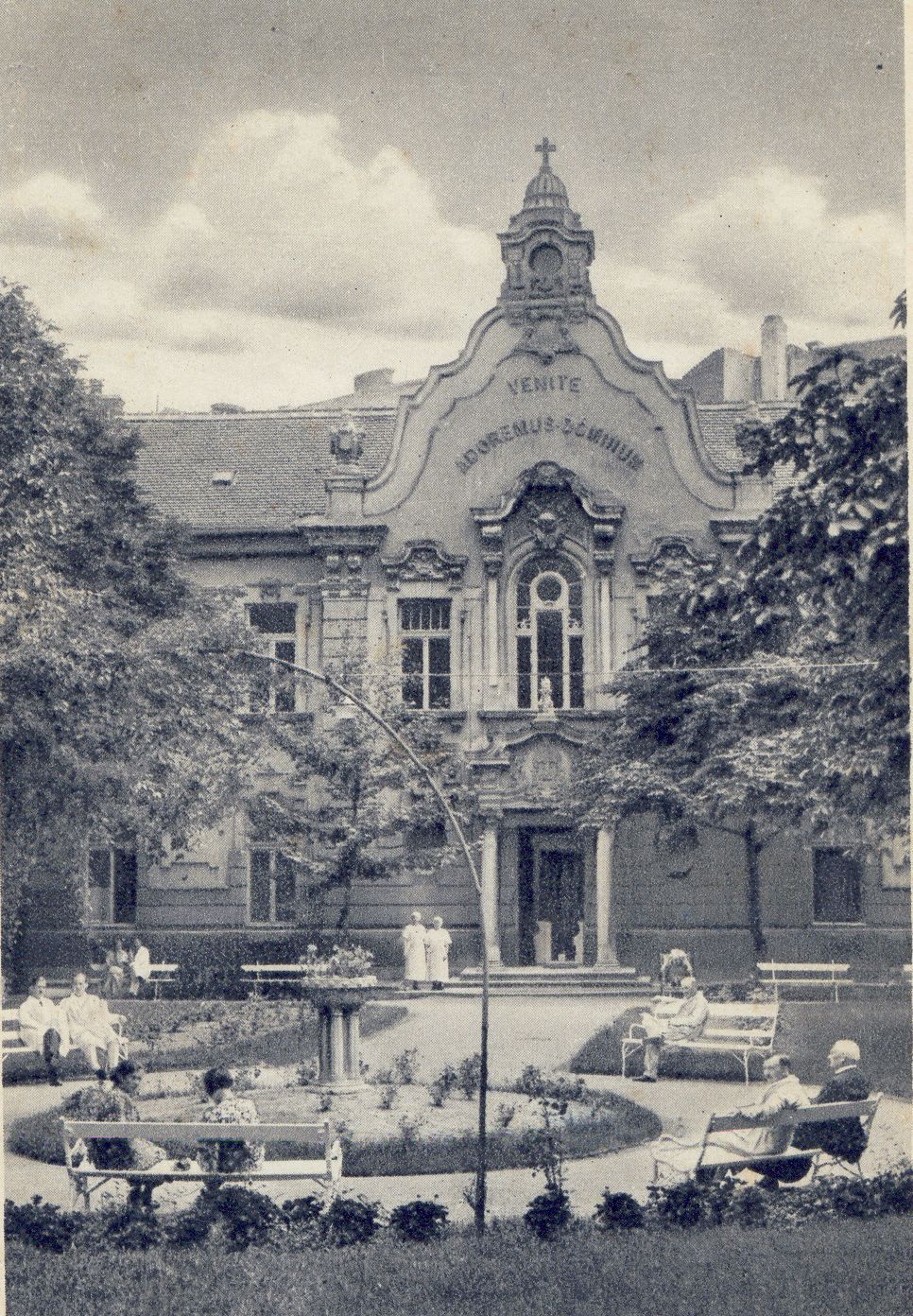 Erzsébet Hospital, 14 Knézich Street, patients and nurses in its yard, around 1925 (Photo: Ferencváros Local History Collection)
Erzsébet Hospital, 14 Knézich Street, patients and nurses in its yard, around 1925 (Photo: Ferencváros Local History Collection)
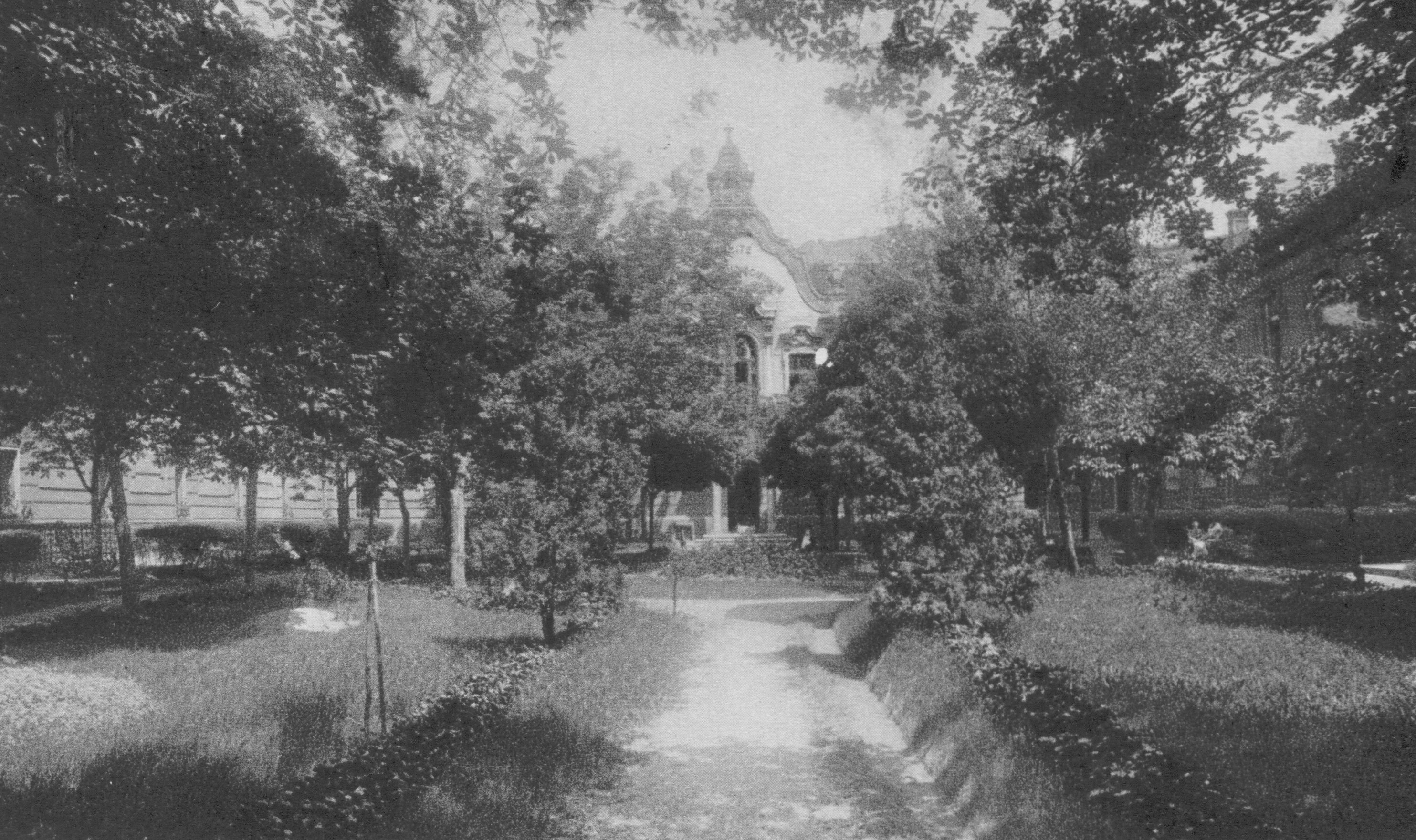
Erzsébet Hospital around 1925, 14 Knézich Street (Photo: Ferencváros Local History Collection)
%4005-01-22-3.jpg)
Erzsébet Hospital today, at 14 Knézich Street, on the corner of Bakáts Square (Photo: Ferencváros Local History Collection)
Meanwhile, the plot under 10 Bakáts Square did not remain unused. It was bought by doctor Antal Erdey in 1906, and thanks to the plans of Géza Márkus, his private sanatorium opened at the end of the year. The building with a Hungarian-Art Nouveau style façade was rented by the capital in 1913, and a midwifery and gynaecology department was established in it.
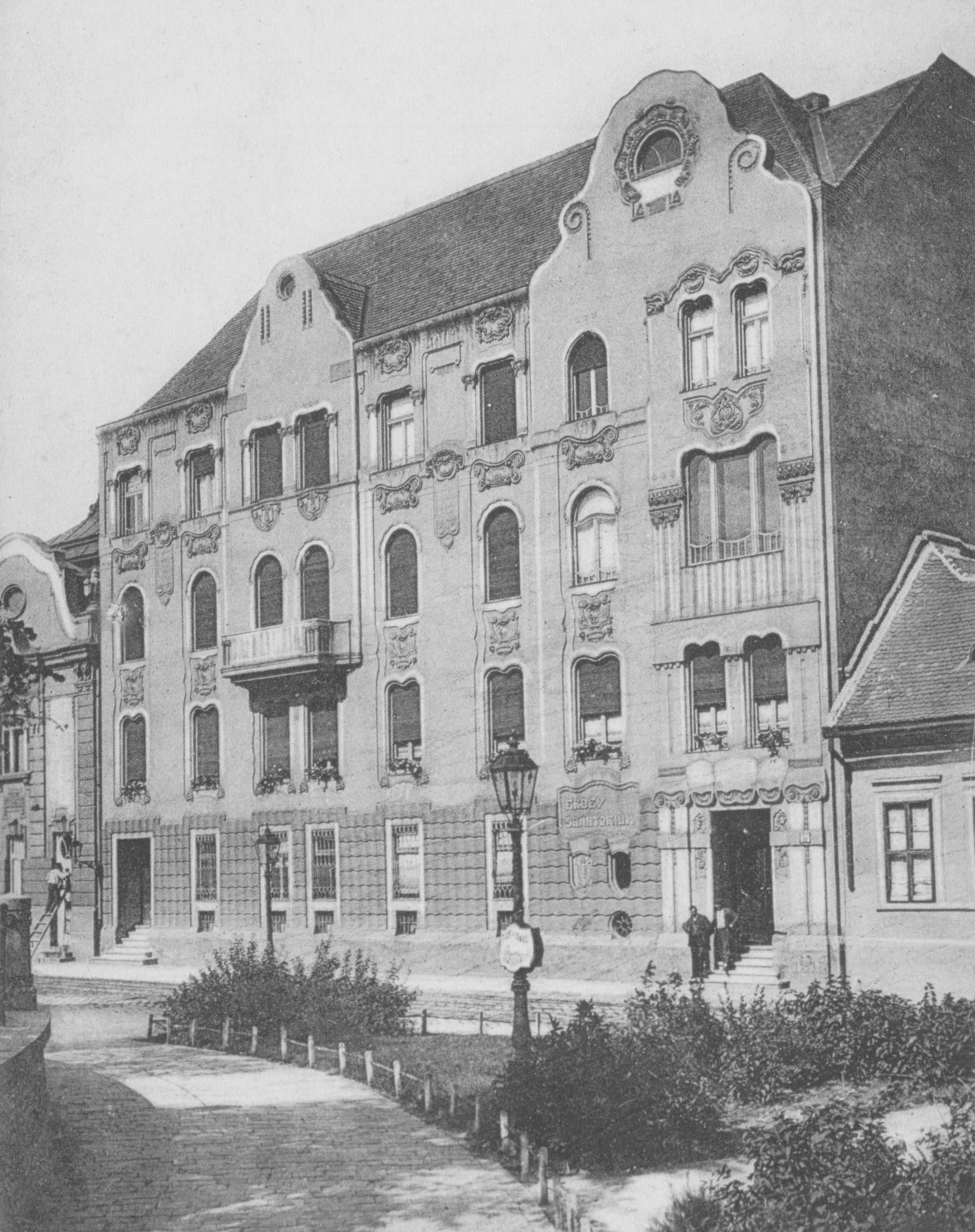 The building was known as the Schöpf-Merei Hospital at 10 Bakáts Square, around 1910, at that time still the Erdey Sanatorium (Photo: Ferencváros Local History Collection)
The building was known as the Schöpf-Merei Hospital at 10 Bakáts Square, around 1910, at that time still the Erdey Sanatorium (Photo: Ferencváros Local History Collection)
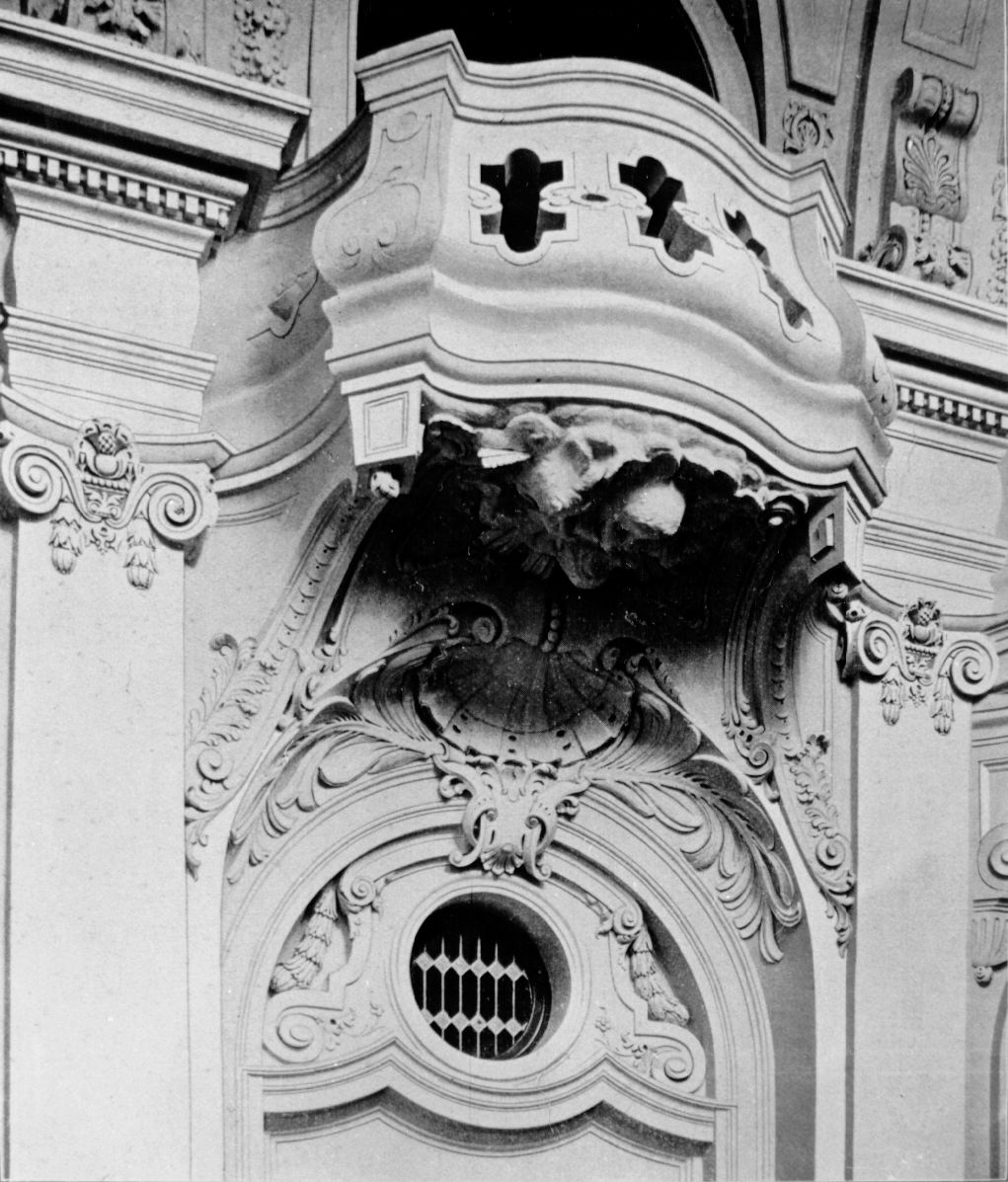
Detail of the Hungarian-Art Nouveau style facade (Photo: Ferencváros Local History Collection)
In 1917, Erdey sold the building to Budapest. It was then that it became the "Public Hospital of Obstetrics and Gynecology within St. Stephen's Hospital." In 1935, another change took place: the hospital was reorganised and rebuilt for the purpose of a radium and X-ray institute, and it became the "Budapest City Eötvös Lóránd Radio and X-ray Institute" and a department of Szent Rókus Hospital.
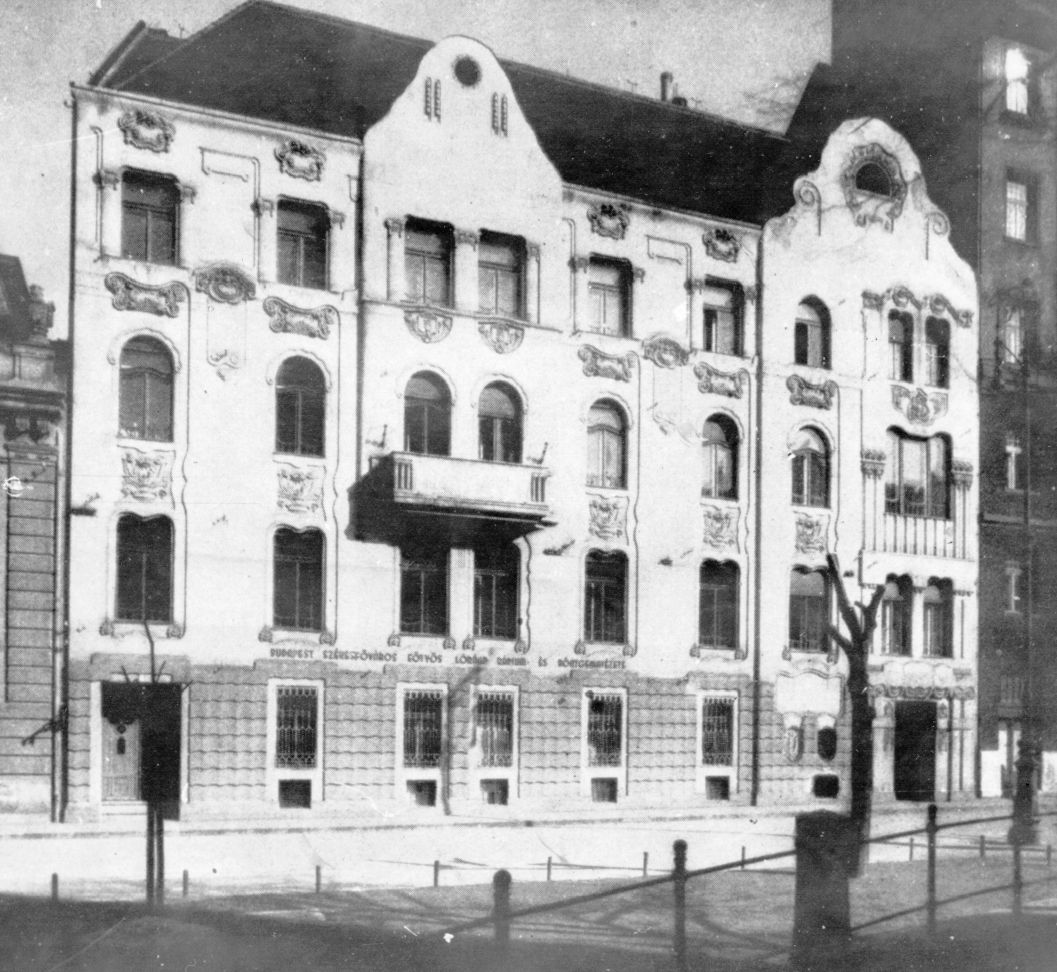
The hospital designed by Géza Márkus was an X-ray Institute in 1935 (Photo: Ferencváros Local History Collection)
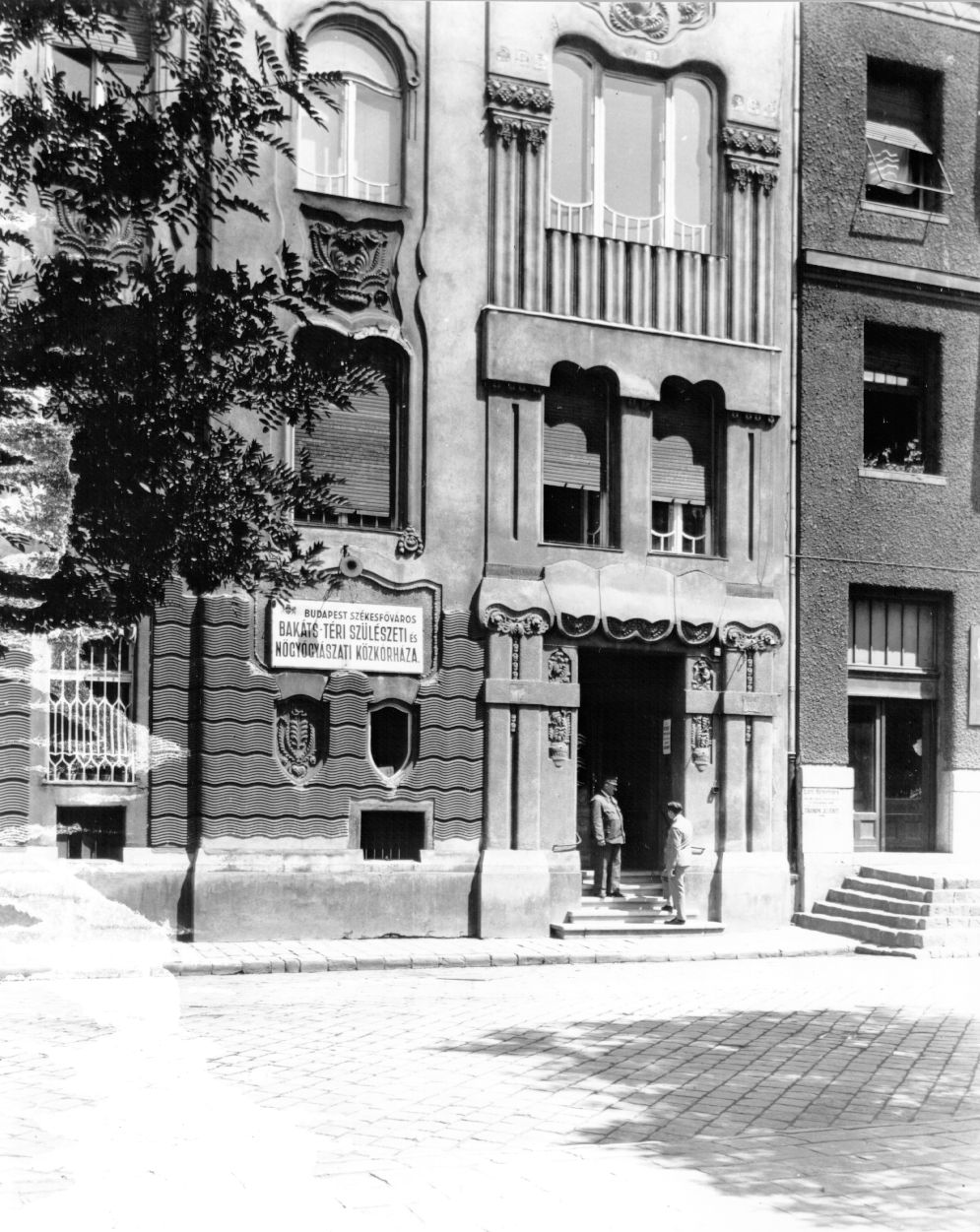
Entrance to the Bakáts Square Public Hospital of Obstetrics and Gynecology around 1930 (Photo: Ferencváros Local History Collection)
But the “Homeopathic” hospital had also been transformed. In 1921, the Ant Cooperative and the National Central Credit Cooperative took over the maintenance of the hospital, at which time it was renamed the “Elizabeth Hospital of the Cooperatives”. In 1949, it was nationalized and merged with the hospital at 10 Bakát Square, which by then was called the National Institute of Oncology.
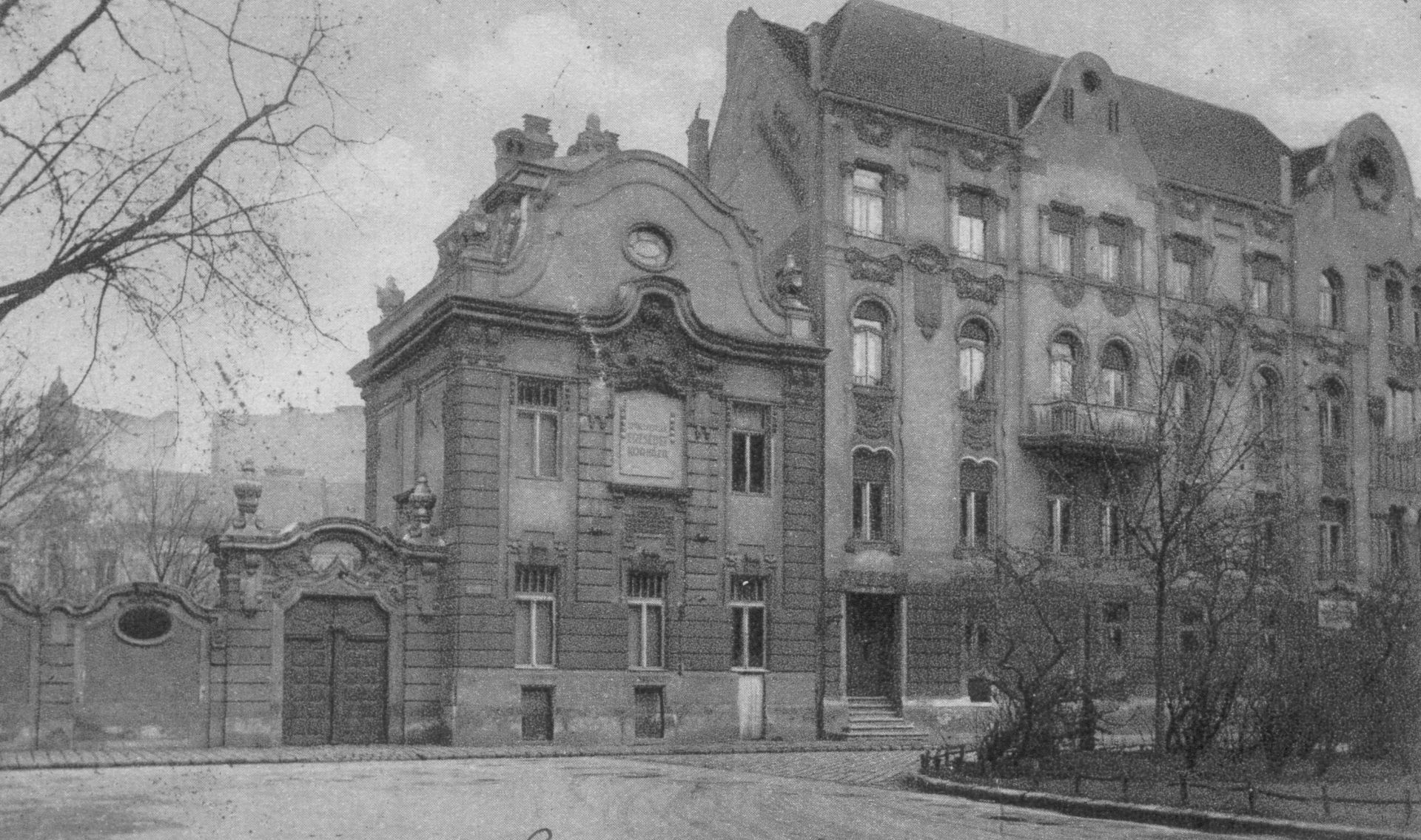
The two institutions next to each other, the Erzsébet Hospital of Cooperatives on the left, and the four-storey General Hospital of Obstetrics and Gynecology on the right, around 1930 (Photo: Ferencváros Local History Collection)
The two merged institutions, of course, did not remain so for long. As early as 1953, a hospital for preterm infants was established at 14 Knézich Street, and in 1954 it was named after Ágoston Schöpf-Merei, an outstanding figure of Hungarian paediatrics. At 10 Bakáts Square, a District Clinic operated between 1953 and 1968.
In 1968, 14 Knézich Street and 10 Bakáts Square hospitals were merged again, and the Schöpf-Merei Ágost Hospital and Maternity Center was established. After 1990, the section on Knézich Street designed by Emil Tőry was given a new function, as the Vilmos Vázsonyi Home for the Elderly – thus, the fate of the two buildings has now split.
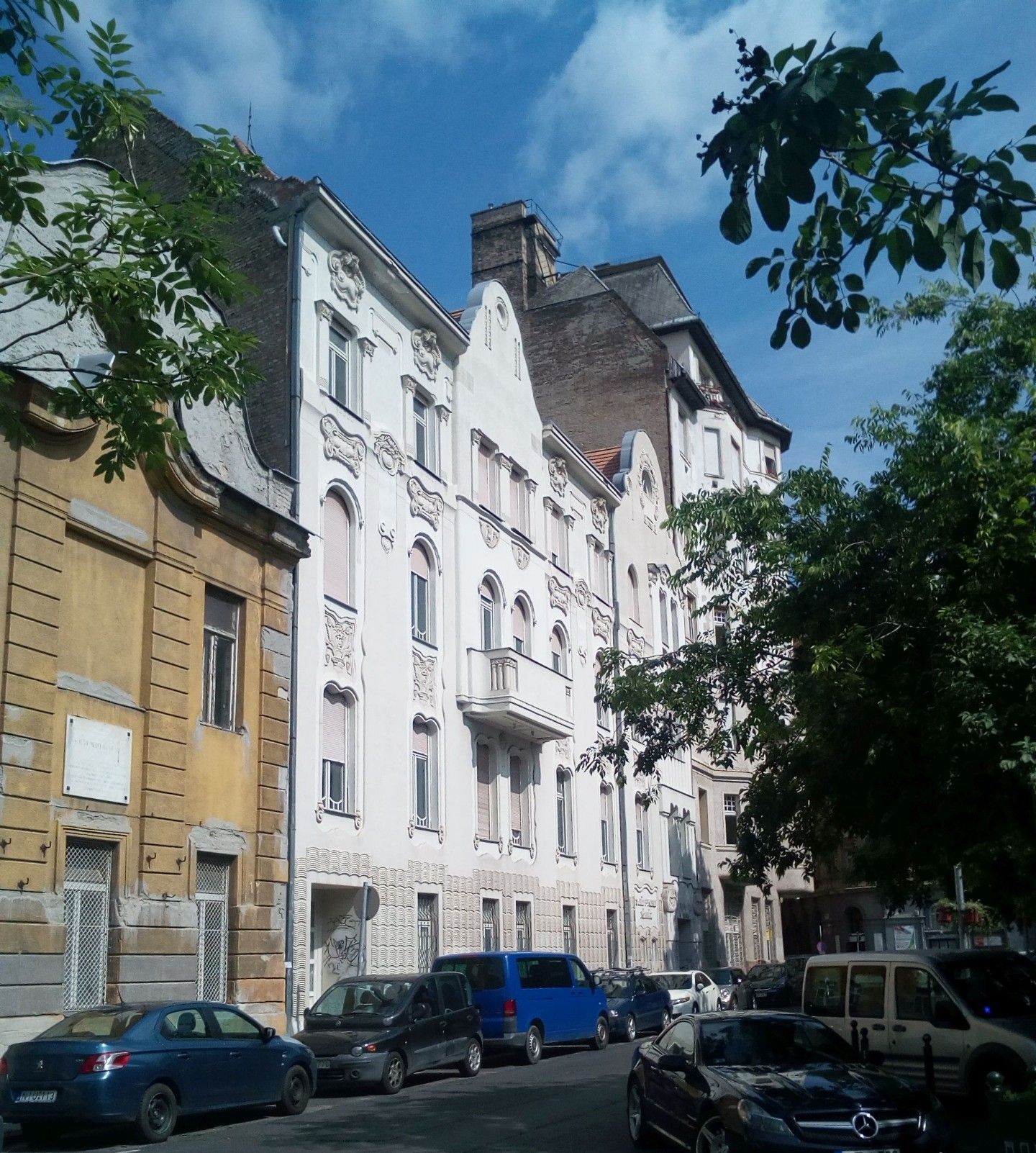
The former Schöpf-Merei Ágost Hospital and Maternal Protection Center today (Photo: Ferencváros Local History Collection)
“Schöpf-Merei” welcomed expectant mothers and babies until 2009, gaining national and even international recognition (it was the first hospital to set up a baby hatch for parents to leave their children anonymously should they be unwilling or unable to care for them). In 2009, the facade of the building was completely renovated, the designers even received an architectural award, but at the same time, the maintainer decided to close the institution.
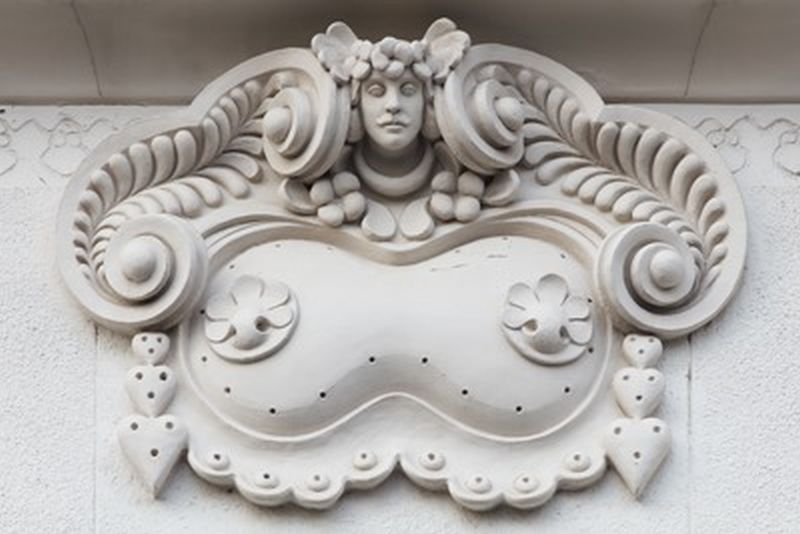
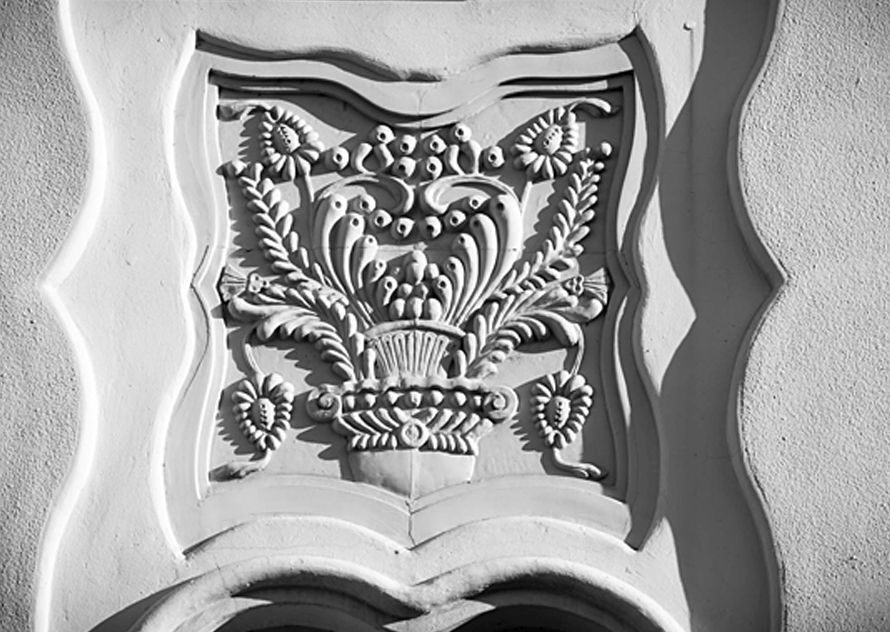
Decorations on the facade (Photo: Ferencváros Local History Collection)
This started another chapter, the house turned into a kind of haunted house, its condition was constantly deteriorating, and although the Ferencváros municipality tried to buy the building from the capital within an exchange agreement, the attempt fell through.
In 2018, news surfaced that Semmelweis University would receive the building, or rather buildings, and by 2021 a modern drug research centre and pharmaceutical campus would be established on about twenty thousand square metres, on the site of the former Elizabeth Hospital and Schöpf-Merei Hospital. We hope that the Hőgyes–Schöpf-Merei Pharmaceutical Research Centre will be completed as soon as possible and that the eastern part of Bakáts Square will be full of life and work again. With work that improves the lives and health of all.
%4005-01-22-2.jpg) Vilmos Vázsonyi Home for the Elderly on the corner of Knézich Street - Bakáts Square (Photo: Ferencváros Local History Collection)
Vilmos Vázsonyi Home for the Elderly on the corner of Knézich Street - Bakáts Square (Photo: Ferencváros Local History Collection)
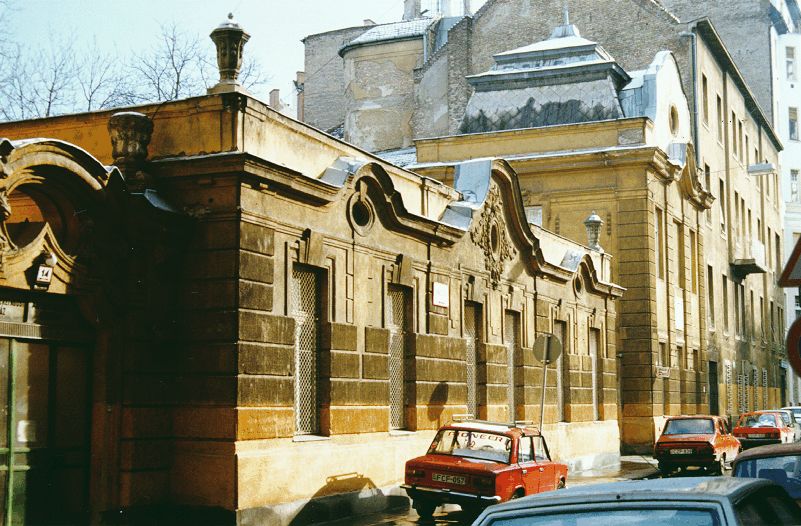
The empty Schöpf-Merei Hospital in 2010 (Photo: Ferencváros Local History Collection)
Cover photo: The former Schöpf-Merei Ágost Hospital and Maternal Protection Center in 2020 (Photo: Ferencváros Local History Collection)

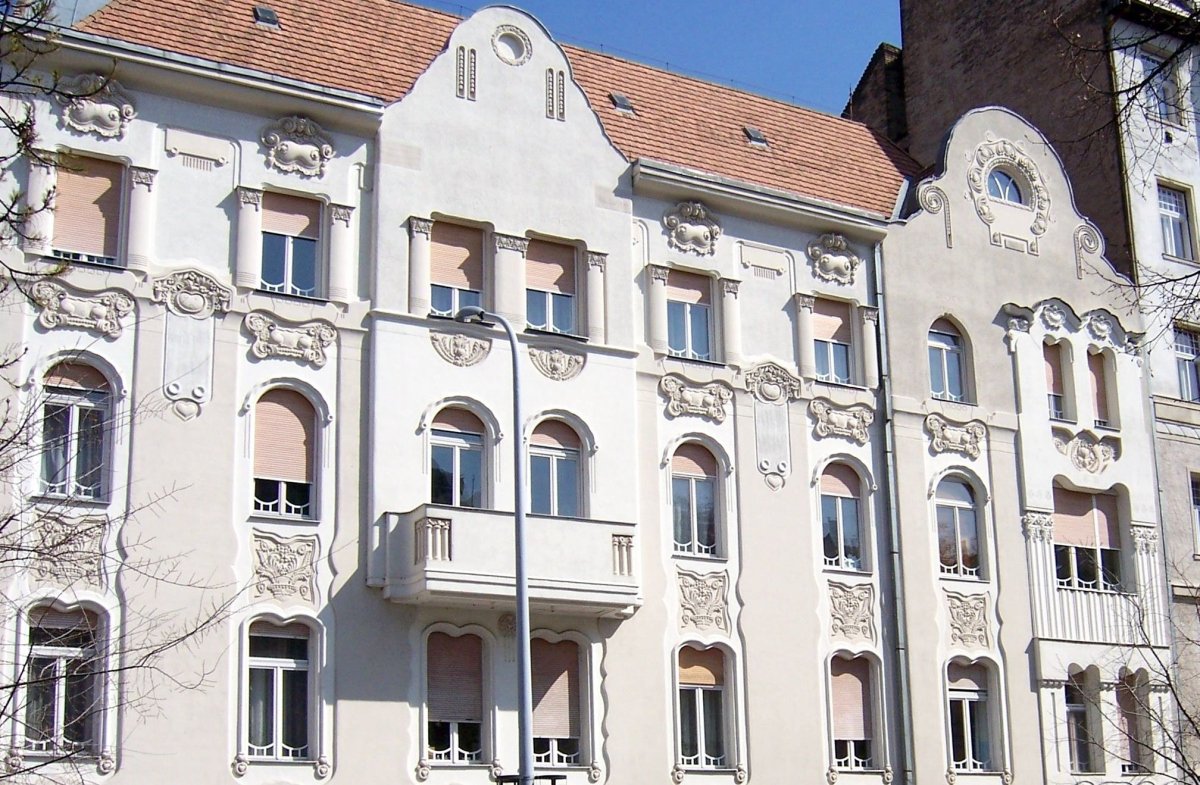



































Hozzászólások
Log in or register to comment!
Login Registration